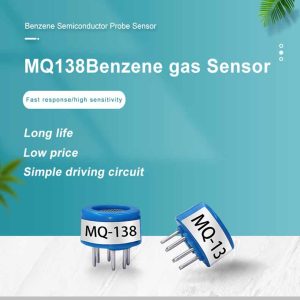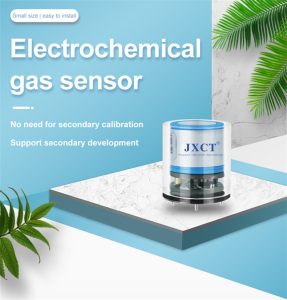-
Gas Sensors: Detecting and Monitoring Hazardous Gases in Industries
- In industries, the presence of hazardous gases can pose a significant threat to the safety of workers and the environment. These gases can be explosive, toxic, or corrosive, and their exposure can lead to severe health problems, including……
- Chat Online
-
Description
In industries, the presence of hazardous gases can pose a significant threat to the safety of workers and the environment. These gases can be explosive, toxic, or corrosive, and their exposure can lead to severe health problems, including respiratory diseases, cancer, and even death. Therefore, it is essential to detect and monitor these gases in real-time to prevent accidents and ensure compliance with regulatory standards. One of the most effective ways to achieve this is through the use of gas sensors. In this article, we will explore the principles of gas sensors, their applications in industries, and the challenges associated with their deployment.

Principles of Gas Sensors
Gas sensors are electronic devices that detect and measure the concentration of specific gases in the air. They work on the principle of changing electrical properties when exposed to a target gas. There are several types of gas sensors, including electrochemical, infrared, optical, and metal oxide semiconductor (MOS) sensors. Each type has its advantages and limitations depending on the application and the target gas.
Electrochemical sensors operate based on the reaction between a target gas and an electrolyte, which generates a current proportional to the concentration of the gas. These sensors have high sensitivity and selectivity but require periodic calibration and maintenance.
Infrared sensors work by measuring the absorption of infrared radiation by a target gas. They have fast response times and can detect multiple gases simultaneously but may suffer from interference from water vapor and other non-target gases.
Optical sensors use light sources such as ultraviolet or visible light to excite a target gas, which then emits light at a specific wavelength. The intensity of the emitted light is proportional to the concentration of the gas. Optical sensors have high sensitivity and selectivity but may be affected by environmental factors such as temperature and humidity.
MOS sensors operate based on the change in conductivity of a metal oxide layer when exposed to a target gas. They have low power consumption, fast response times, and can operate at high temperatures but may suffer from cross-sensitivity and drift over time.
Applications of Gas Sensors in Industries
Gas sensors have numerous applications in industries, including monitoring air quality, detecting leaks, and ensuring compliance with regulatory standards. Some of the common applications are:
Air Quality Monitoring: Gas sensors can be used to monitor the concentration of hazardous gases such as carbon monoxide, nitrogen dioxide, sulfur dioxide, and methane in industrial environments. This information can be used to improve ventilation systems, reduce emissions, and protect workers' health.
Leak Detection:
Gas sensors can be deployed in pipelines, storage tanks, and other equipment to detect leaks before they cause significant damage or harm to the environment. They can also be used to monitor the integrity of natural gas pipelines and prevent explosions caused by gas leaks.
Compliance Monitoring:
Many industries are required to comply with regulatory standards regarding the emission of hazardous gases. Gas sensors can be used to monitor these emissions continuously and ensure compliance with regulations. For example, they can be used in wastewater treatment plants to monitor the concentration of volatile organic compounds (VOCs) and prevent discharge into water bodies.
Hazardous Area Monitoring:
Industries that handle hazardous materials such as chemicals, petroleum products, and explosives need to monitor their environments for potential risks. Gas sensors can be used to detect the presence of hazardous gases such as hydrogen sulfide, carbon monoxide, and methane in these areas and alert workers to take appropriate action.
Challenges Associated with Gas Sensor Deployment
Despite their benefits, there are several challenges associated with the deployment of gas sensors in industries. Some of these challenges include:
Calibration:
Gas sensors need to be calibrated regularly to ensure accurate measurements. Calibration requires specialized equipment and trained personnel, which can be costly and time-consuming.
Interference: Gas sensors can be affected by interference from non-target gases such as water vapor, oxygen, and nitrogen. This interference can affect the accuracy of measurements and require additional filtering or compensation techniques.

Drift: Over time, gas sensors can experience drift in their response characteristics due to changes in temperature, humidity, or other environmental factors. This drift can affect the accuracy of measurements and require frequent recalibration or replacement of sensors.
Maintenance: Gas sensors require regular maintenance to ensure their proper functioning. This includes cleaning, replacing filters, and checking for physical damage or wear. Maintenance can be challenging in harsh environments or where access is limited.
Conclusion
Gas sensors play a critical role in detecting and monitoring hazardous gases in industries. They offer real-time data on gas concentrations, enabling early detection of potential risks and ensuring compliance with regulatory standards. However, their deployment requires careful consideration of various challenges such as calibration, interference, drift, and maintenance. By addressing these challenges effectively, industries can maximize the benefits of gas sensor technology and enhance worker safety and environmental protection.
-
Recommend:
-
-
Gas detectors are crucial devices used in various industrie…
-
How do gas detectors ensure industrial safety?
Gas detectors play a crucial role in ensuring the safety of…
-
How Gas Sensors Help Combat Air Pollution?
Air pollution is a pressing global issue that poses signifi…
-
How can gas sensors be used in air quality monitoring?
Air pollution is a significant global concern that affects …
-
 : +86 155 8830 2704
: +86 155 8830 2704 : jxdziot@gmail.com
: jxdziot@gmail.com
